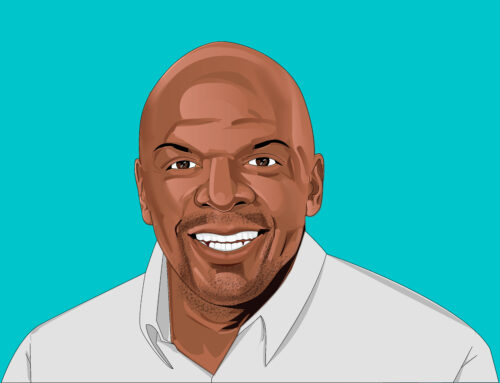Jim D’Amico Talks Hiring Velocity and A Three-Tiered Differentiated Recruiting Model

In this episode Talent Chronicles, Jim D’Amico joins us to talk about his journey through Talent Acquisition. Jim is an expert in hiring velocity and has extensive TA experience that has led him to his current role as the Global Talent Acquisition Leader for Celanese. D’Amico highlights what hiring velocity is and how to achieve it, as well as takes us through a three-tiered differentiated recruiting model.
JCSI: Hi everybody, this is Bergin Sullivan with JCSI. I’m here today with Jim D’Amico joining us for an interview in our Talent Chronicles series. Thanks so much, Jim, for being here today.
Jim D’Amico: Thank you for having me.
JCSI: So, you’ve been in talent acquisition for almost 20 years now with experiences in industries ranging from Food Production to Consumer Goods, to Healthcare, all leading to your current role as the Global Talent Acquisition Leader for Celanese.
Can you give us a quick background of your work experiences and tell us a little bit about how you got into talent acquisition?
Jim D’Amico: Sure! So, the first half of my TA career was spent in third-party. Recruiting, contingency, agency, RPO, executive search, then the second half is really focused in-house where I sort of fill a niche of improving existing recruiting functions.
How I got into recruiting is like everyone else, I grew up wanting to be a recruiter… you know that’s not true. No one does that! We all kind of fall into it.
So, I’m a product of the army at a military college, and I have a degree in education, but no interest in teaching. So, when I got out of school, I said, “Hey, I’m going to be a great comedian.” and I went to Second City and I did stand up. Well, that doesn’t pay the bills, so I started with a contingency recruiting firm to pay the bills until I had enough money and enough time to go out on the weekends and do stand up. I caught the bug and here I am now, 25 years later, still loving it.
JCSI: That’s awesome! So, prior to this interview, we went back and forth a little bit, and you had mentioned something that I hadn’t heard before. It really piqued my interest. So, I’m excited to talk about it: Hiring Velocity. So, could you first start off by giving us an explanation of what hiring velocity is?
Jim D’Amico: Sure. So, we consider it the queen of all metrics, it’s the most important metric that we look at. Hiring velocity is neither the speed of filling positions nor your time to fill measure. Hiring velocity measures it on a rolling basis.
So, we use a 12-month rolling process to measure our velocity. And what it represents is the number of positions opened within a 12-month period versus the number of positions filled in a 12-month period. It doesn’t mean that all the positions that were opened in that 12-month period are the positions you’ve filled in that 12-month period.
It accepts and understands that you have a surplus of positions naturally. You don’t walk into a new TA shop and have zero recs unless you’re employee number one. So, it represents that there is that surplus, but what it allows you to do is show that you are working against that surplus year over year and that you’re reducing and managing it.
You can give the business an idea of, in any period, how many open positions they will have to account for and must manage around. So that’s the beauty of velocity and it’s a really good way to take a 12-month velocity and break it down to find out: what should our quarterly numbers be? What should our monthly numbers be? What should our weekly numbers be? So that the recruiting team understands at what pace of hiring they should be working against strategically.
We can look at that metric very regularly and see if we are off. So, if we’re falling behind in velocity, we can get in and do the diagnostics. That is the Keystone metric for everything that we do.
JCSI: Awesome! Why do you feel like companies sometimes struggle with keeping that hiring velocity? Where do they fall off track?
Jim D’Amico: Sometimes it’s that they might be looking at the wrong metric, right? A lot of companies look at time to fill which is an important metric, but if you’re just looking at your time to fill, you’re missing all the positions that aren’t getting filled. They don’t count against your time to fill, so it’s not a true measure of recruiting success.
Or they’re not looking at overall what the organization needs. They’re looking at what one hiring manager needs, which has a disproportionate volume. Since a lot of TA folks don’t focus on that and they don’t understand the intersection of business, they can struggle with that.
The one question, Bergin, that I ask talent acquisition leaders all the time is “Why does TA exist?” And invariably, the answer that I get is TA exists to fill jobs. That’s a hundred percent incorrect. TA doesn’t exist to fill jobs, TA exists to increase, share, or stakeholder value.
We are a part of the function of the business to do that. There’s no position in a company that doesn’t exist for that very purpose. So, if you don’t understand how, you impact the business, then that’s problematic. Knowing that our responsibility is to increase shareholder value. How we do that is through filling positions quickly, efficiently, and with quality candidates. But that’s not why we exist.
JCSI: How do you feel like you and your team have found that success around hiring velocity? What have you found that really works?
Jim D’Amico: First, it begins with measuring or creating awareness. I guarantee if you talked to most recruiters in a corporate function right now, and you say, “How many positions do you need to fill a year to maintain your hiring philosophy?” they don’t even know. They’re just worried about what’s right in front of them. So, step one is creating awareness.
Two is really preparing for it. When you look at the data, you analyze it, you put yourself in a position better prepared to meet needs.
Celanese is interesting because it’s the second company that I’ve worked at, where our biggest peaks of hiring are February and October. October is so exaggerated at both companies, we call it Shocktober in TA!
We know that we need resources in place well in advance of that, to be able to manage our work levels so that we’re not overloading recruiters with recs and that we’re preparing for those seasonal demands. So, we know that when and where we must prepare.
The other thing we do is we take a very future-oriented look at the markets. When I say the markets, what I mean is we look at the labor recovery that we’re going through now and in different cities. We’re pre-preparing, essentially with hopeful optimism, 12 months out, but by six months out, we feel we have a pretty good idea of where we need to be positioned from a recruiting and a marketing standpoint to meet the needs of those markets.
So, we really try to make sure that as a team, we’re not just looking five inches in front of our face, but we’re really getting out there.
We also mentioned or spoke about it a little bit prior to this, about your differentiated recruiting model. Can you touch upon that? Maybe how you’ve developed it over the last 15, 20 years and what things you’ve kind of figured out along the way?
Sure, so by no surprise, I’m a big fan of it. The differentiated recruiting model grew out of what’s called a differentiated workforce model which was something like twenty or twenty-five years ago.
Mark Huselid and his team had put this together. He’s a researcher out of the University of Michigan. Basically, what it said is that within any organization, you essentially have three types of roles. Those roles are strategic roles, what he called support roles, and then surplus roles. I hate the term surplus, so we use strategic, tier one support, and tier two support. Those roles are differentiated in what the outcomes they provide produce for share and stakeholders and they’re disproportionate. Generally, they’re pyramidical so you have fewer people that truly have those strategic roles, we have a bigger band that has those tier one support roles, and then most organizations have a very large tier two support function.
I had the opportunity when I was with Schwan to do some work with Mark Huselid when we were developing some HR work there. It really struck me that when you looked at the structure of what his team had determined, it fit well with talent acquisition.
So those three role definitions; strategic, tier one, tier two support, certainly align because those are the kinds of positions. But when I put it into a TA context, we added some further definitions.
- So, a tier two support role, sort of that base of the pyramid, is a role that has a low barrier to entry and there’s not a great deal of performance differentiation with your hire. So, your quality of hire is more about tenure. The example I use, and this is getting a little outdated at this point, Bergin so I apologize, but if you go to the grocery store and look at their best cashier and their worst cashier, there’s not a great deal of difference to the company based on their performance. Right?
- That second level, that tier one support, there is a greater barrier to entry and there’s more differentiation based on performance. So, with that greater barrier of entry, that also means because not everybody’s qualified, there’s also going to be an increased need for recruiting intervention.
- Then in that top tier, there’s a huge difference between the best and good. I always use this analogy because I worked in healthcare, if you had a child and your child needed brain surgery, do you want a good brain surgeon or do you want a great brain surgeon? So, there’s a big differentiation. There’s also a much higher barrier to entry and a much smaller potential candidate pool.
So, when we look at that model, what we realized is that it does a disservice to any organization you support if you have a “one size fits all” recruitment model and a “one size fits all” recruitment process. How we’ve gained value from that is we’ve looked at that tier two support tier where there’s not a big barrier to entry, it doesn’t need to be a lot of human assessment of talent, and we try to automate as much as we can. We try to have a very quick, convenient process for candidates, but also allows us to automate a lot of the process. So, the prequalification, the scheduling of the interviews, we’d like that all automated so I can take my recruiters out of that and apply them to the other two tiers.
In that mid-tier, we have a process that is going to be more like what people are used to where there’s some rigor to it. There are the recruiters doing an assessment interview and selecting the best candidates to move a small slate forward. They are managing candidate expectations, they are available for questions, comments there, they’re providing detail about locations and cultures. Things like that can be important to move somebody to a new job.
At the highest level, we get to a very “white glove” process, right? We get to a process that is more front-loaded with the development of those candidates, knowing that it could take a year or two to develop a candidate net level before we’re ready to convert them to an app.
We’ve designed those processes and have done a couple of things. Recruiters should only be in one of those lanes. So, we took recruiters out of those verticals where they’re managing all of IT or all a Procurement or all a Food Services, and they’re managing within tier one support, tier two support, or strategic support. They’re managing in those because I want them to manage a single process. Every time they change process, that’s where problems come in because it takes a while for our brains to click. It also impacts the rec load. So, in a transactional type of position, which would be the example of a tier two support role, a recruiter can handle 50 recs, easily because it’s all the same position, right? It’s high volume and it doesn’t require a lot of intervention because we’ve automated it.
Whereas at that mid-tier, we hold our recruiters to 14 recs. In that simple math, my recruiters work probably 45 hours a week, 45 to 50 hours. So, that’s giving two to three hours per rec per week when you break it down.
My top tier, we keep to three to five recs because those require much more time and management for them. So, what we’ve done is we’ve created a system built around efficiency that’s not one size fits all but also winds up being highly effective in our delivery.
JCSI: I think you’re right, not everyone always thinks about it that way and narrows it down. I love that idea of the three different levels, that was a really good way of describing it.
Jim D’Amico: A bonus to that too is if you’re running a recruitment organization, it shows a progression path for a recruiter. You start at the lowest tier and then you have an opportunity to work your way up. So, it helps with development for the recruiters as well.
JCSI: Yeah, that’s a great point. How would you say that this model has helped you regarding diversity recruiting?
Jim D’Amico: So, it’s been part of what I think has been very helpful because it frees the recruiters up within their lanes to get the appropriate amount of attention to diversity recruiting. Diversity recruiting is not Field of Dreams, right? You can’t build it and they will come. You don’t throw a posting out there and just assume that diversity is going to come, but you must take deliberate efforts and deliberate steps to make sure that you’re increasing that diversity at the top of the funnel, and then it flows through.
It’s given us the ability and the time to create what we call diversity playbooks which are the steps, the processes, and the resources that recruiters use at the different levels that are spelled out. It also creates time for the recruiter to truly spend time with the candidates.
Gosh, I get scared when I hear people that are operating at those top two tiers that have 60 recs, right? So, they have time to source, network, and develop those relationships because it’s human relationships and the stories that we can tell that really contribute to our diversity. We look at how much diversity we’re bringing to the table that is in front of our hiring managers, and one of the things that we’ve measured for a long time is how many of our slates have diverse candidates on them.
A couple of years ago, we were 51-52%? As we changed our model, we got it into the seventies and now we’re in the mid-nineties. So, it’s been a great story and it’s wonderful because we see that then translated into the hiring and promotion so that’s been a really wonderful win for us.
JCSI: That’s awesome! So, we’ve gone through a lot. This has been great, like I said before, I really do love that hiring velocity idea. I think it’s awesome.
So, any other final thoughts, anything that we didn’t go through that you’d like to share that you’d like to touch upon before we close out?
Jim D’Amico: You know, the only thing I would like to touch upon just because I think it’s become a very big issue is a lot of recruiters are feeling very burned out right now. There’s so much to manage and this is the toughest market in the US conceivably since World War II. Right? I mean, this is just difficult.
So, I just want to encourage everybody that’s in TA, I don’t want you to leave TA and I don’t want you to burn out, so just always make sure to take care of yourself. Make sure you get some downtime, make sure you have a support network of friends and mentors you can reach out to. This is a great career and I want to see everybody thrive in it.
JCSI: I love that, relatable! Well, thank you so much, Jim. I really appreciate you taking the time to meet with us for our Talent Chronicles series.
Jim D’Amico: Thank you for having me, Bergin it was a pleasure.
Talent Chronicles is brought to you by JCSI, an innovative recruitment consultant that delivers better hires, faster, and at less cost.




